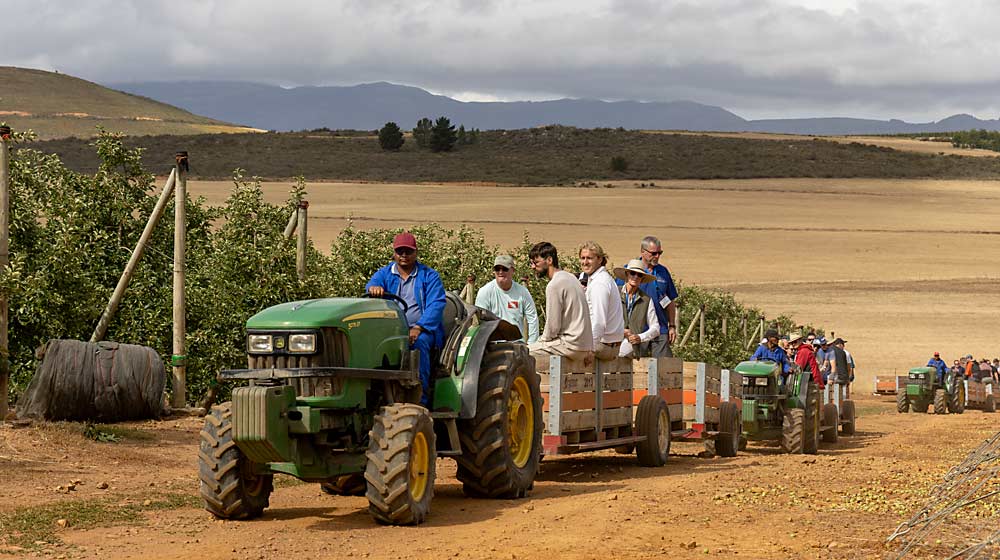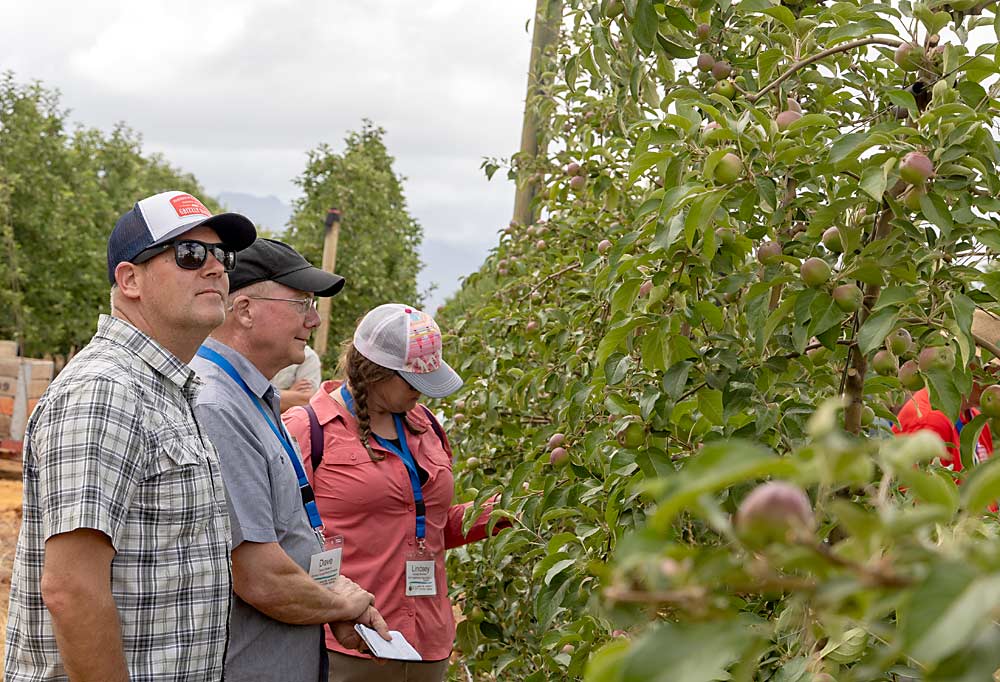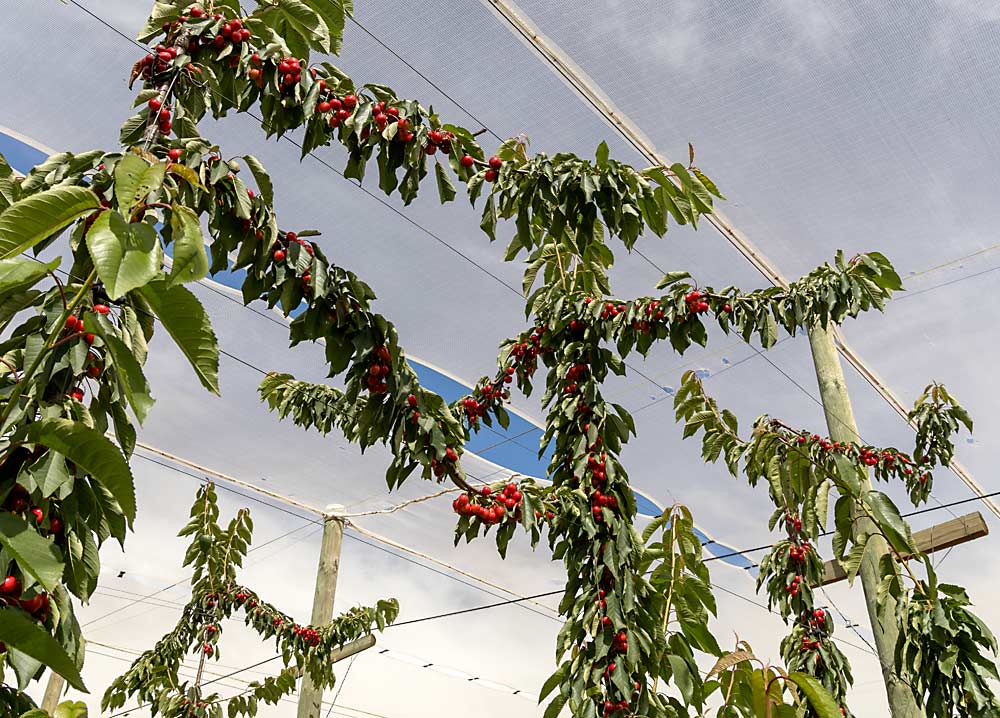
One of South Africa’s largest pome fruit growers, Dutoit Agri, hosted the International Fruit Tree Association on Dec. 6 at its orchards in a region known as the Koue Bokkeveld.
That means “heaven for tree fruit,” said company CEO Willem Coetzee in his introduction to the tour group, though others translate it to “cold shrubland.” The mountainous farming area gets more chill and more rainfall than the nearby valleys, which are planted more commonly to stone fruit and vineyards.
Across the 1,000-hectare complex, which features worker housing and a school for employee’s children living in the remote area, the group toured apple, pear and cherry orchards. Many grew under nets to protect fruit from sunburn.
Most of the company’s apples grow on semidwarfing rootstocks, such as M.7 and MM.109, due to the region’s weak soils, said Willie Kotze, Dutoit’s innovation director and the primary tour guide. Because labor is far less expensive than in North America, Dutoit can afford the hand labor to manage the more vigorous trees to optimize quality, he said.
“About 35 to 40 percent of our production cost is labor, so we can afford to spend that to get the system to work,” Kotze said. Electricity, meanwhile, clocks in at 20 percent of production costs.
A common comment among tour attendees was how well-trained the orchards were.

But, even with that labor advantage, Kotze said the company — and South African growers as a whole — are learning more about dwarfing rootstocks that could fit their soils and growing conditions to improve fruit uniformity and offer efficiencies.
The group toured plantings of Bigbucks, a South African Gala sport, and Lady in Red planted on M.9 in relatively better soils, which were spaced at 3.5 meters by 1.25 meters. That’s approximately a 12-foot row and a 4-foot tree spacing, for those following along in the U.S.
“The consistency and quality is what we want from this,” Kotze said of the fifth-leaf plantings, which were carrying a crop near 95 metric tons per hectare. (That translates, conveniently, to roughly 95 bins per acre using 900-pound bins for the conversion.)
In the afternoon, the tour group checked out a young cherry planting under netting and blush pear variety Cape Rose, which is sold under the brand name Cheeky. Blush pears are a growing market for South African producers, and they can grow them quite efficiently on dwarfing rootstock BA29, Kotze said.

On Dec. 7, blush pears were also featured during the visit to Chiltern Farms, located in Vyeboom, which is part of the apple-heavy region known as EGVV (for the towns of Elgin, Grabouw, Vyeboom, and Villiersdorp).
Owner Justin Mudge told the tour group that the Forelle pears were a growing opportunity for his business. The sixth-leaf block that the tour visited got off to a slow start due to planting weak nursery trees, he said, but now they expect 60 to 70 metric tons per hectare of high-quality fruit.
“With the opening of the Eastern markets to blush pears, we’re pretty excited about it,” he said.
Mudge and his farm managers, Emile Pretorius and Johann Bayer, also shared their efforts to move to more efficient tree systems on M.9 rootstocks and away from semidwarf plantings. They are intrigued by some of the Geneva rootstocks and have some plantings on G.757 as well.
The tour visited plantings of Lady in Red on M.9 Nic.29 spaced at 1 meter between trees and 3.5 meters between rows. Although the weak nursery trees also struggled in their first season, it’s clearly a good scion/rootstock combination and is now a productive and more efficient block averaging over 100 metric tons per hectare, Mudge said.
“What we know now is that we can farm M.9 successfully. We know what it is and what it does here,” Mudge said, adding that he’ll let someone else learn how to farm on the newer Geneva roots first.
—by Kate Prengaman







Leave A Comment